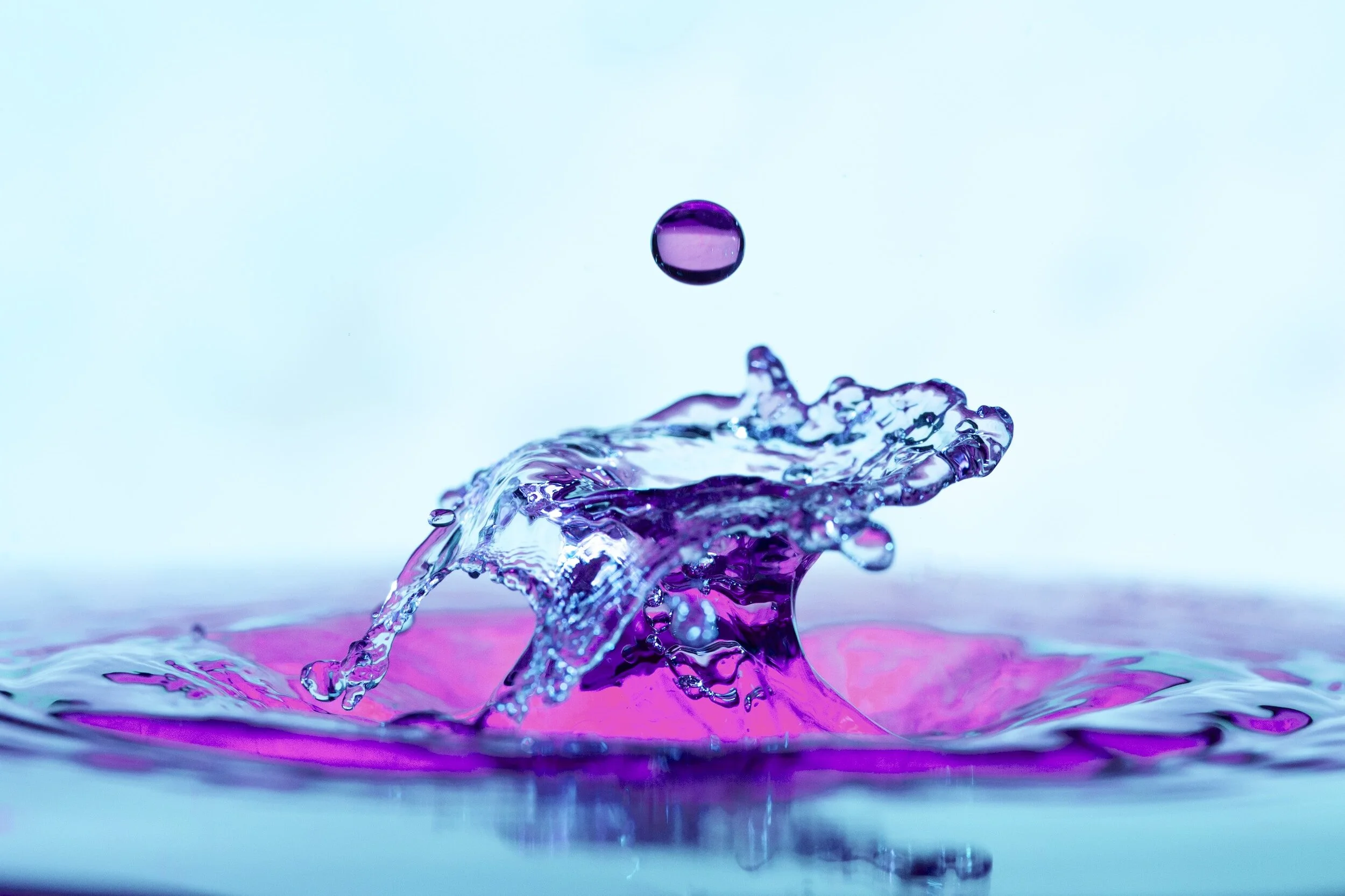Vaginal Lubricants: How to Choose the Best One for You
Sifting through the shelves of lubricants at your local pharmacy store can often feeling overwhelming. You might ask yourself, “how do I know what’s the best lubricant for me?”, or “what’s makes a good vaginal lubricant, anyways?” Understanding the different types and quality of vaginal lubricants on the market should be considered as they play a significant role in women’s sexual pleasure during intimacy and long-term vaginal health. For individuals experiencing dryness or discomfort during sex, using a high quality lubricant that is personalized to your body and tissues can be an absolute game changer. Here we will explore in greater depth the different types vaginal lubricants, the pros and cons of each type, and how you can find the best one to match your needs. From there, you can take proactive steps towards optimizing your sexual health and long-term vaginal health.
Types of Lubricants
When it comes to vaginal lubricants, it’s important to know that there are various types available to choose from. Understanding the different types of lubricants is essential for selecting the right one for your specific needs. So let’s delve in and explore the four main categories of lubricants: water-based, oil-based, silicon-based, and a hybrid option.
Water based lubricants
Water-based lubricants are a popular choice due to their affordability and their ability to mimic the body's natural lubrication sensation. They also easily wash off from your skin and fabric. However, due to its quick absorption into the body, it may require occasional reapplication; and while it can initially feel smooth, it can become slightly sticky as it is absorbed.
Oil-based lubricants
Oil-based lubricants typically have a prolonged staying power compared to their water-based or silicone counterparts, which can an advantage for certain individuals, especially for those with dryer or thinner tissue. Nevertheless, it's essential to be aware that oil-based lubes are linked to a higher susceptibility to yeast infections, a crucial consideration and a huge reason I typically do not recommend oil-based lubricants. Additionally, they have a propensity to leave stains on fabric and bedding that can be challenging to remove.
Silicone-based lubricants
Silicone-based vaginal lubricants offer a hypoallergenic solution that is gentle on sensitive skin. With their minimal ingredient list, they reduce the risk of irritation and allergic reactions, making them a suitable choice for those with sensitivities. What sets them apart is their remarkable longevity compared to water-based alternatives, ensuring a more satisfying and uninterrupted experience. These lubricants have a thinner consistency, providing a natural and comfortable feel, but this also means they may require a bit more cleanup after use, especially from the skin. Users should be aware that silicone-based lubes can potentially stain sheets. However, their excellent durability makes them an ideal companion for activities like using a dilator or for individuals who find water-based lubricants insufficient in terms of coverage and comfort.
Hybrid lubricants
Hybrid vaginal lubricants typically blend water-based lubricants with silicone or aloe, and offer extended durability compared to pure water-based lubricant counterparts. However, hybrid lubricants are less common on the market, and therefore, have less research and information available. They often resemble lotions in texture, but provide a comfortable and long-lasting solution for intimate moments.
As always, it's important to consider personal preferences, comfort, allergies, sensitivities, and applications when choosing a vaginal lubricant. Additionally, always check product labels and consult with your healthcare professionals to ensure compatibility with intended uses.
pH and Osmolality
Understanding the concepts of pH and osmolality is crucial when it comes to choosing appropriate vaginal lubricants and maintaining long term vaginal health. Let’s start by going over some basic definitions.
pH refers to the acidity (or alkalinity) of any given substance, measured on a scale from 0 to 14. A pH of 0 is considered highly acidic, a pH of 7 is neutral, and a pH of 14 is highly basic. The natural pH of a healthy vagina typically falls within the acidic range, around 3.8 to 4.5. The slightly acidic environment of the vagina actually helps to prevent the overgrowth of harmful bacteria or fungus, and maintain an overall balanced vaginal microbiome. Simply choosing a lubricant that more closely mimics your vaginal pH can help prevent infections like bacterial vaginosis or yeast infections!
Osmolality, on the other hand, refers to a substance's ability to draw moisture out of tissues and cells. In relation to pelvic health and vaginal lubricants, osmolality plays an important role in maintaining hydration levels within the vagina
Vaginal lubricants with high osmolality may draw moisture out from vaginal tissues, causing dryness or irritation. Conversely, low osmolality lubricants are designed to mimic natural bodily fluids and help retain moisture in the tissues for enhanced comfort during sexual activity or as needed for pelvic health.
Choosing appropriate vaginal lubricants that have both suitable pH levels and osmolality can contribute significantly toward vaginal health by maintaining an overall healthy microbiome, and creates comfort during intimacy.
Ingredients
When it comes to choosing vaginal lubricants, it is important to be mindful of the ingredients used in these products. Some ingredients may have potential risks or adverse effects on pelvic health, while other ingredients can provide added benefits and support overall vaginal wellness.
To ensure a safe and healthy experience, it is crucial to know which ingredients to avoid in vaginal lubricants.
Ingredients such as glycerin, parabens, and fragrances are commonly associated with irritation and allergic reactions. These substances can disrupt the natural pH balance of the vagina and potentially lead to discomfort or infections.
On the flip side, there are ingredients that are considered beneficial for pelvic health. Look for lubricants that contain natural moisturizers like aloe vera or hyaluronic acid. These ingredients help maintain moisture levels without causing irritation. Additionally, products with plant-based or organic formulations can be gentler on sensitive skin.
Recommended Products
When it comes to choosing a vaginal lubricant, it's important to find a product that is not only effective but also safe for your body. One highly recommended option in the market is Good Clean Love.
Good Clean Love stands out as my number one recommendation, for several reasons! First and foremost, their vaginal lubricants are known for being the closest in pH to the natural vaginal environment compared to other lubricants on the market. This pH balance helps maintain the delicate ecosystem of your vagina, which and reduces the risk of bacterial overgrowth, yeast infections, or skin irritation.
Additionally, Good Clean Love offers a range of options when it comes to formulation. They provide a water-based lubricant“Naked”, a hybrid lubricant, and even a fertility lubricant “Biogenisis”, giving you flexibility based on your personal preferences and needs.
One main ingredient worth mentioning in their water based lubricant is aloe vera, which has soothing properties and can provide extra comfort during intimacy.
Overall, if you're looking for a vaginal lubricant that prioritizes safety, effectiveness, and mimics the natural pH balance of your body, I highly recommend considering Good Clean Love.
Find Guidance at Calko Pelvic Rehabilitation and Wellness in Canfield, OH
When it comes to choosing and using vaginal lubricants, it is important to prioritize your health and safety. While there are many options available on the market, remember to consider the ph, osmolality, ingredients, sensitivities, personal usage and preferences. If you need additional guidance, there are healthcare professionals who are willing and able to provide personalized advice based on your specific needs and conditions.
Here at Calko Pelvic Rehabilitation and Wellness, I am an occupational therapist specialized in women’s pelvic health and would be happy to guide you through the process of selecting a vaginal lubricant that aligns with your individual requirements.
Maintaining vaginal health is crucial for overall comfort and sexual satisfaction. By seeking professional guidance with a women’s healthcare professional, you can ensure that you are making the most informed decisions about the product that is best for you.

